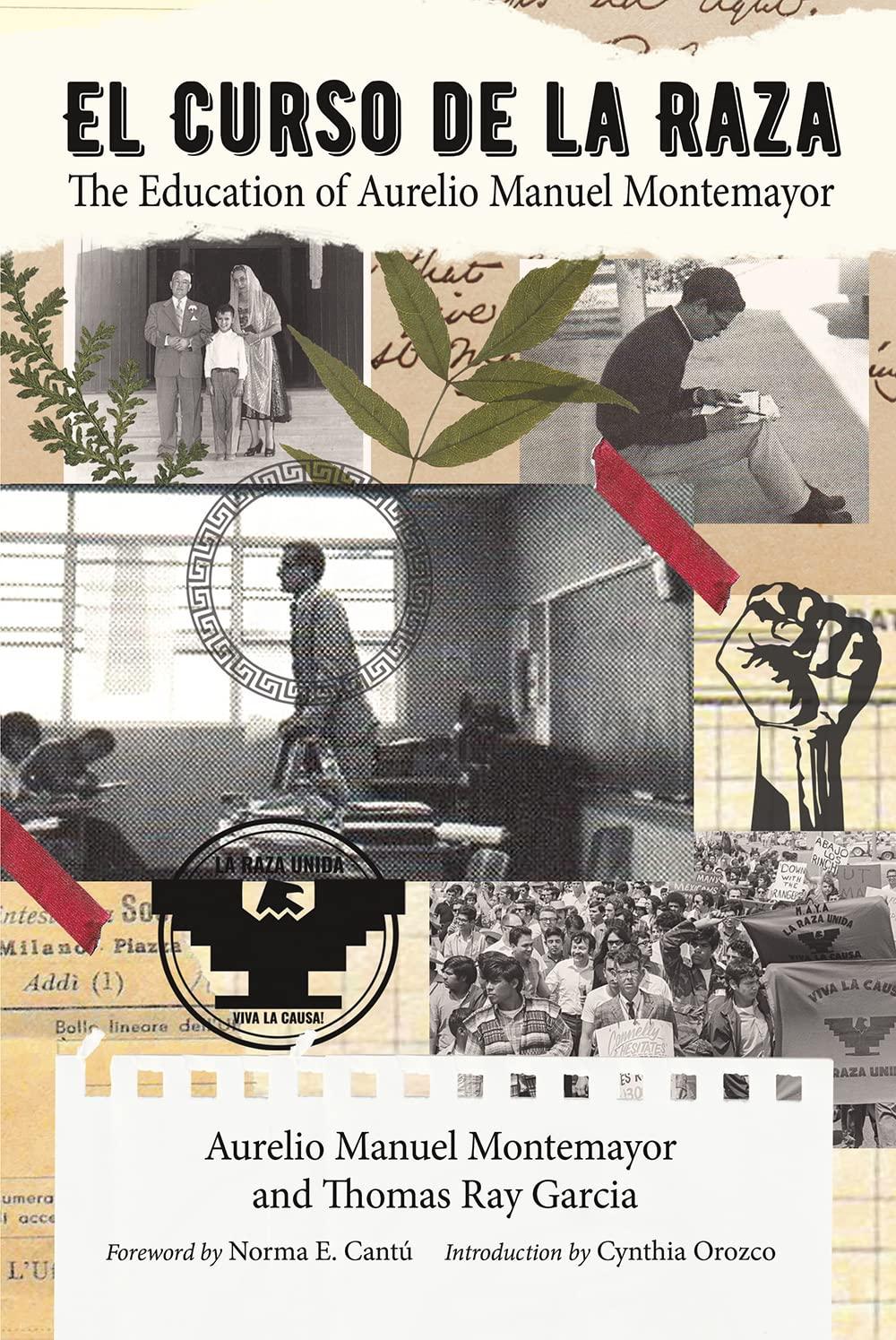
MEMOIR
El Curso de la Raza: The Education of Aurelio Manuel Montemayor
Aurelio Manuel Montemayor and Thomas Ray Garcia
Texas A&M University Press
July 2023
ISBN 978-1-64843-127-2; 208 pages
El Curso de la Raza ("The Course of the People") offers important reflections on some little-known aspects of the Chicano Movement in Texas and elsewhere in the 1960s and 1970s. Also known as “El Movimiento," the Chicano movement gained prominence during civil rights demonstrations, farmworker strikes, women's rights marches, and anti-war protests.
Co-authored by two South-Texan writers and educators, Aurelio Manuel Montemayor and Thomas Ray Garcia, El Curso de la Raza is a well-detailed chronicle of Montemayor's noteworthy career as a public-school teacher, Chicano political activist, and professional-development trainer for teachers. It focuses on the formative years before Montemayor began his current position as an education specialist with San Antonio's Intercultural Development Research Association (IDRA).
The book explores Montemayor's contributions to the Chicano Movement "through the lens of an educator-activist whose identity was in constant flux." Montemayor’s efforts to try to make students more aware of the importance of Mexico and Mexican Americans to the history, culture, and economies of Texas and the United States are richly detailed.
Montemayor grew up in Laredo, immersed in Texas's complex borderland culture. His mother was a social worker who also was politically active in the League of Latin American Citizens and is remembered as an early Mexican American feminist. His father, a bookkeeper, was a Mexican citizen but also a legal U.S. resident who loved humor and verbal interplay and was a self-taught, avid reader. Father passed his love of books to son, and young Aurelio developed a deep affinity for classic English and American literature.
The book's title echoes a key turning point in Montemayor's life. In the mid-1960s, he was a young high school English teacher pushing back against the curriculums and reading lists he was supposed to follow. When he tried to talk about a story or poem from English or American literature that was required for his class, he realized his students, all of whom were from the Texas-Mexico borderlands, "could not relate to it."
To create more engagement in his classes, he writes that he began "sneaking in as much Spanish as I could into the classroom because I didn't know if it was allowed or not, and trying to see if I could get them to write and read and understand the English language which they need to deal in this society." After a brief stint in graduate school, Montemayor spent one more year teaching high school English before his frustration with administrators and his own teaching skills prompted a move. He then became a Chicano activist and political organizer and worked with groups such as the Mexican American Youth Organization, Volunteers in Service to America, and the Mexican American Council for Economic Progress.
During this time, he also began creating concepts and content for a teaching course that later would be called "El Curso de la Raza." In his prologue, he explains: "To achieve liberación, I believed our people needed a course. Not lessons taught by activists, but rather consciousness-raising exercises led by facilitadores [facilitators]. I sought a pedagogical reimagining of the Chicano Movement: moving away from the toxic machismo [pride in one's masculinity] that infected even the most charismatic leaders and the dangerous strains of Chicano activism fueled by hatred rather than love."
The curso soon became part of an effort by Montemayor and others to launch and sustain America's first Chicano college, Colegio Jacinto Treviño, in Mercedes, Texas, in 1970. A few years later, the college collapsed because of funding shortfalls and infighting among some of the school's backers and administrators. Montemayor had witnessed similar dispiriting outcomes in earlier projects within the Chicano movement. He accepted an offer from IDRA in 1975 and became the developer of the organization’s Family Leadership in Education model.
Montemayor's and Garcia's book offers up an intriguing and informative array of additional materials, including: a foreword and an introduction by prominent Mexican American writers and educators; a transcript of Montemayor's testimony at a 1968 United States Commission on Civil Rights hearing examining teacher certifications in Texas; documents related to the curso in a proposal submitted to the Campaign for Human Development in 1974, seeking support to bring motivational training and business training to the Chicano poor; and Montemayor's academic paper, "Rationale for a Chicano Learning Center," that became an important basis for Colegio Jacinto Treviño.
Readers curious to know more about the Chicano Movement and students delving into its history and influence will find plenty to consider in this important new work.
Aurelio Manuel Montemayor received a bachelor’s degree in English and philosophy from St. Edwards University Austin and a master’s degree in bilingual education from Antioch Graduate School of Education in Ohio. He has directed efforts to create and support collaborative efforts such as the Texas Latino Education Coalition, the San Antonio Coalition for Educational Excellence, and Parents Bilingual Education. He was lead trainer for 10 years with the Community Education Leadership Project in San Antonio and has conducted leadership training for youth organizations, non-profit groups and civic organizations.
Thomas Ray Garcia is a writer, educator, and entrepreneur from Pharr, Texas. He is the author of the award-winning short story collection The River Runs: Stories and co-author of El Curso de la Raza: The Education of Aurelio Manuel Montemayor. He is the founder and executive director of the College Scholarship Leadership Access Program (CSLAP) and an adjunct professor at South Texas College.
